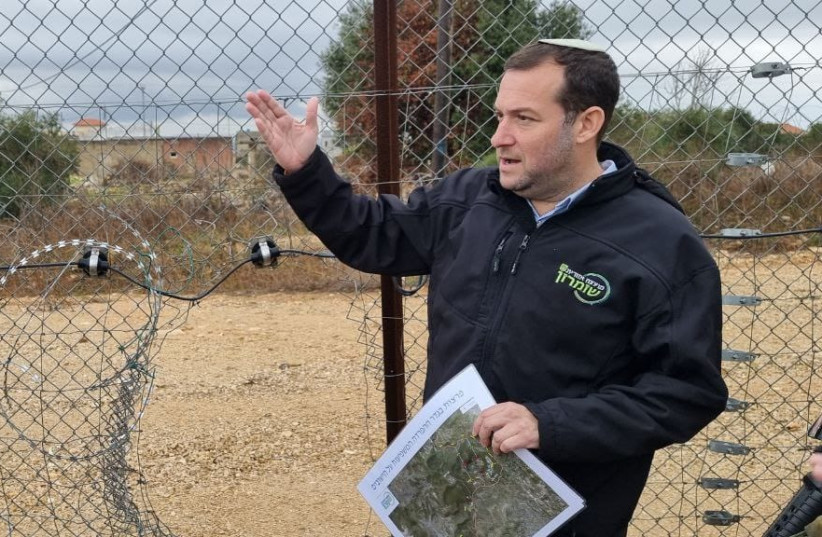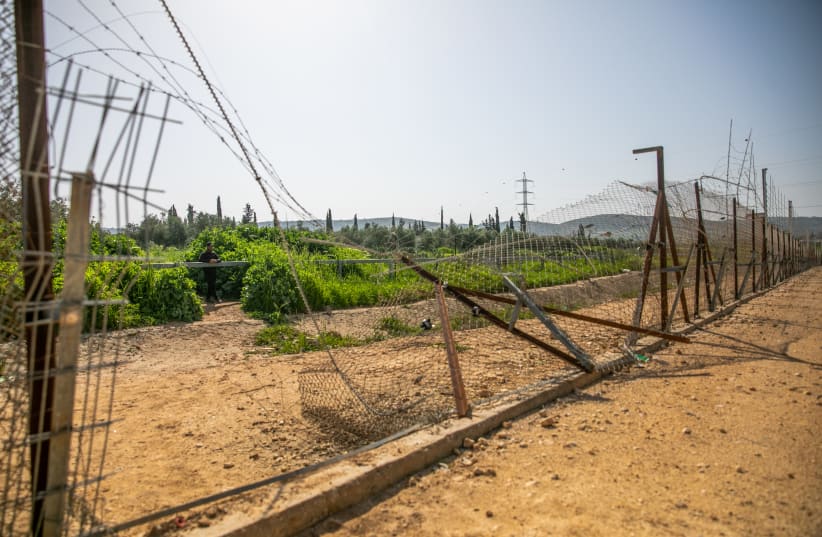Twenty years after Israel first began construction on a West Bank security barrier designed to halt terrorist attacks, a Palestinian gunman drove from Jenin to Bnei Brak through a breach in that barrier on March 29 and killed five people.
He was hardly the first terrorist to show the barrier’s ineffectiveness and is unlikely to be the last.
In the minds of most Israelis, the barrier was completed long ago, and attacks like the one in Bnei Brak at the end of March occurred because of a gap in some accidentally overlooked section that could quickly be repaired.
Israeli politicians play into that vision by pledging to “fix the gaps,” as if a momentary concerted effort to address an oversight is all that is needed.
In reality, the barrier is a project that was never completed and was largely abandoned five years after it was begun.


For the project to become an effective preventative measure against terrorism, it would need to be revived, not fixed.
State Comptroller State Comptroller Matanyahu Englman, already investigating the matter, summed it up best after the Bnei Brak attack when he said the barrier was a failed endeavor.
Here are 10 things to know about the project that was condemned internationally, and never even provided Israelis with the full security promised them.
1. Terrorism prevention
Former prime minister Ariel Sharon authorized a security barrier to prevent terrorist attacks by Palestinians in 2002, at the height of the Second Intifada that began in 2000 and ended in 2005, when 1,137 Israelis were killed mostly from Palestinian suicide bombings. The barrier was initially designed to physically separate West Bank Palestinians from Israelis, with the placement of a barrier that would block Palestinians from targeting Israelis.
2. The barrier’s route
The barrier now has a route of 525 km. (326 miles), according to the Defense Ministry, of which 470 km. (292 miles) – 90% of the project – have been built to date. It generally hugs the Green Line, but 100 km. (62 miles) of it dips into the West Bank at a number of critical areas. It also encompasses all of Jerusalem, including what is known as east Jerusalem. This is the area over the pre-1967 lines that the Palestinians hold will be the future capital of their state.
3. Previous routes
The initial route envisioned in 2002 at 364 km. (226 miles) was intended to mainly stay along the Green Line, save for Jerusalem. In response to protests from the Right and the settler leadership, the government rerouted the barrier into the West Bank so that it wrapped around settlements.
In its most extended form, the barrier’s route was projected to be about 810 km. (503 miles).
This included loops around the Ma’aleh Adumim bloc and the Ariel and Kedumim blocs that cut deep into the West Bank and were never actually built. What has been constructed represents only 58% of that extended route.
4. Left, Palestinian and international objections
The Israeli Left, Palestinians and the international community all objected to the construction of the barrier in the West Bank, in a territory they said was designated to be included within the final borders of a Palestinian state. They argued that the security issue was best addressed by a barrier along the pre-1967 lines, and that anything else was a land grab and an attempt by Israel to unilaterally set its borders under the guise of security.
Former deputy prime minister Haim Ramon once told reporters that the barrier was in fact the future border of the two-state solution. With this in mind, the term “isolated settlements” is determined by the planned route of the barrier, and describes those communities outside that path.
Opponents of the barrier tended to refer to it as “the wall,” “the separation wall,” or “the separation fence.” Supporters spoke of it only as “the security barrier,” to underscore its role in saving lives.
5. ICJ says barrier is illegal
The International Court of Justice at The Hague issued an advisory opinion on July 9, 2004, after a February 2004 hearing, stating that Israel’s construction of a barrier on territory over the pre-1967 lines was illegal under international law and against the UN charter.
The opinion issued by 14 judges on a 15-member panel stated that completion of the barrier would be tantamount to “de facto annexation.” It called on Israel to stop building the barrier, and to compensate the Palestinians for damages due to its construction.
6. High Court of Justice petitions delay work
Barrier construction faced immediate delays by scores of petitions brought to Israel’s High Court of Justice by Palestinians and left-wing nongovernmental groups. Resolutions of those issues in many cases took years.
The barrier often cut off Palestinians from their farmlands and or created hardships for individual Palestinian homes and communities. In some cases, it ran through Palestinian villages or towns.
7. The age of the missile
The security barrier was designed prior to the significant rocket and missile threats that Israel has faced from Hezbollah in the North since the Second Lebanon War in 2006, and the rocket fire from Gaza since Hamas forcibly seized control of that territory from Fatah in 2007.
What might have seemed like a top defense priority in 2002 has not held its own next to seemingly more significant threats along Israel’s southern and northern borders.
Security experts have also argued that on the ground, IDF intelligence work as well as deference measures can also be effective in halting and preventing such attacks. Prime Minister Naftali Bennett referenced this on Tuesday when he said that “fences alone are not enough.”
8. Billions spent on the barrier
Israel has invested more than NIS 8 billion in the barrier project, according to data published by Englman last week, including NIS 5b. on the barrier itself. Based on those numbers, one kilometer of the barrier cost the state NIS 10.6 million. Israel, Englman said, has also spent NIS 140m. annually for upkeep and maintenance of the barrier.
9. Israel freezes work on the barrier
Israel largely froze work on the barrier in 2007, when it had completed 450 km. (280 miles) of its route, avoiding what would have been diplomatically sensitive areas. Defense Ministry data as to the completed section have varied over time, extending to 500 km. (311 miles) of finished construction and then dropping back to 470 km. (292 miles) as of 2017, the same length it stands today, the ministry said.
The ministry already in 2014 was speaking about a 525-km. (326-mile) route that excluded the Ariel and Ma’aleh Adumim blocs.
Most of the unfinished sections are in the Gush Etzion region, where residents do not want a barrier, and in the South Hebron Hills, where there are environmental issues.
10. Gaps in the barrier
Talks of “gaps” in the barrier do not refer to the unfinished sections but rather to holes in the already completed sections, through which thousands of Palestinians cross into Israel to work illegally, sometimes by driving through. They do so either by climbing over the sections made up of tall concrete slabs, or by cutting into the wire fencing that covers long stretches of the barrier’s route.
They can do this because the IDF has not maintained the operational aspect of the barrier, which was designed both as a physical stumbling block for terrorists and as a defensive system that needed constant monitoring and repairs.
To be effective, routine patrols combined with camera and motion systems would alert the IDF to any attempt by Palestinians to cross the barrier. In reality, this level of monitoring has never occurred, thereby limiting the effectiveness of the barrier as a terrorism prevention tool.
